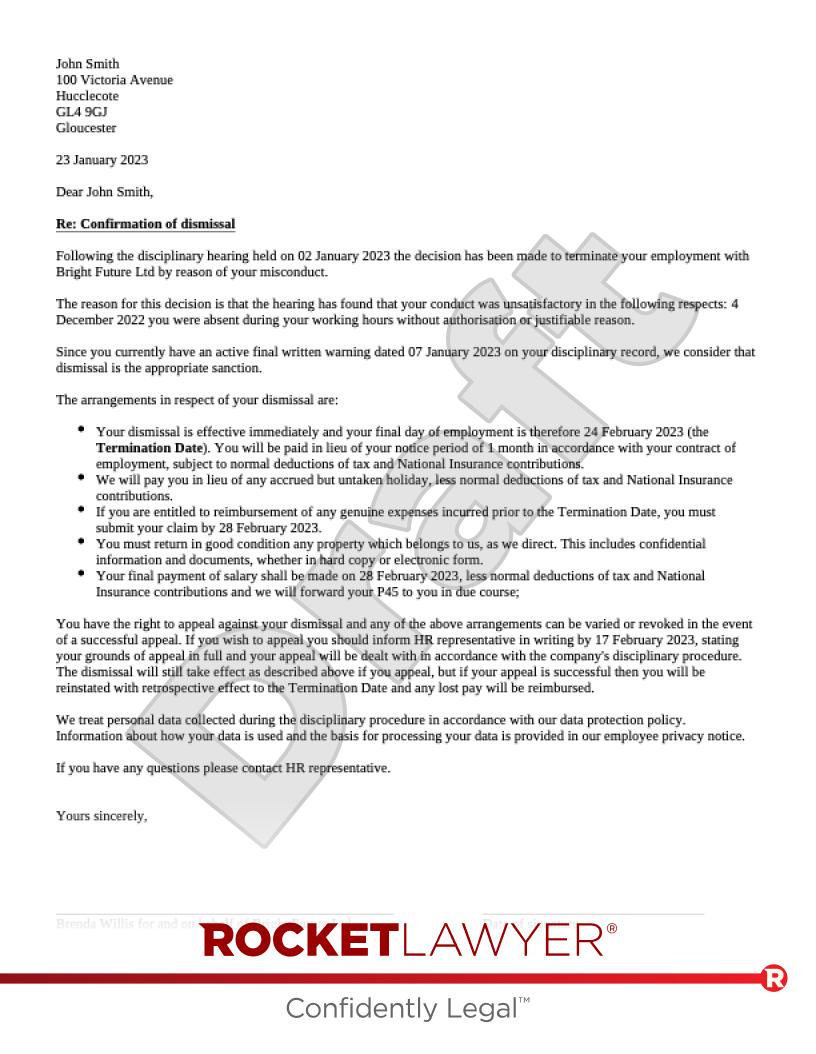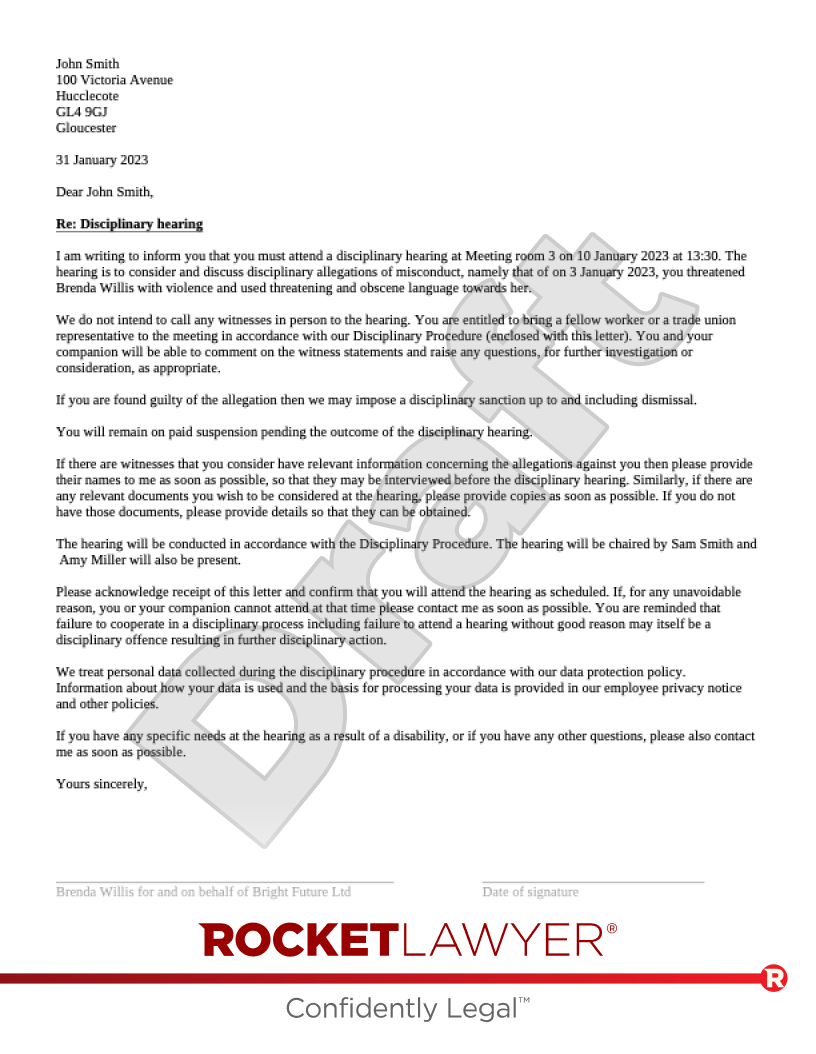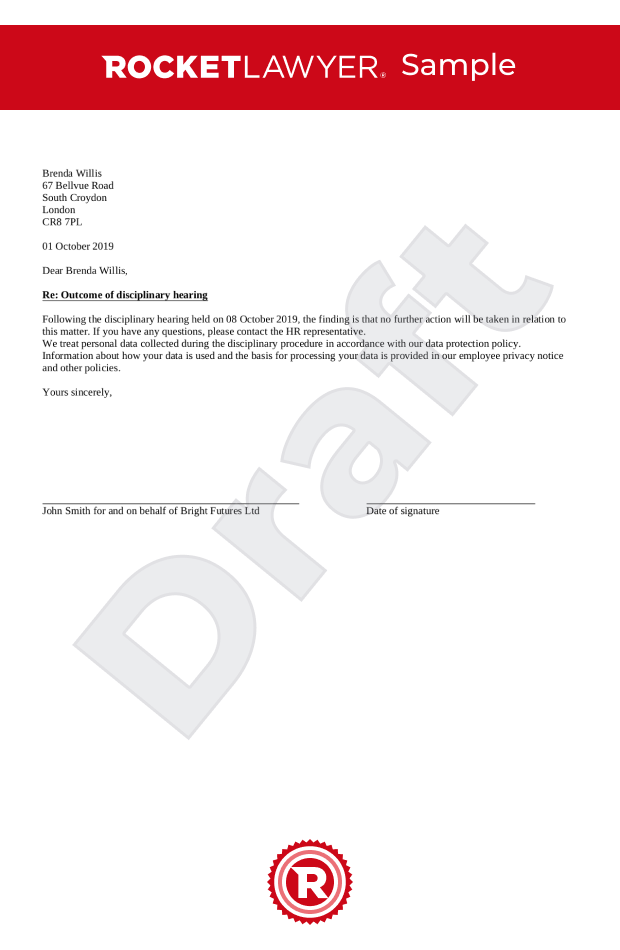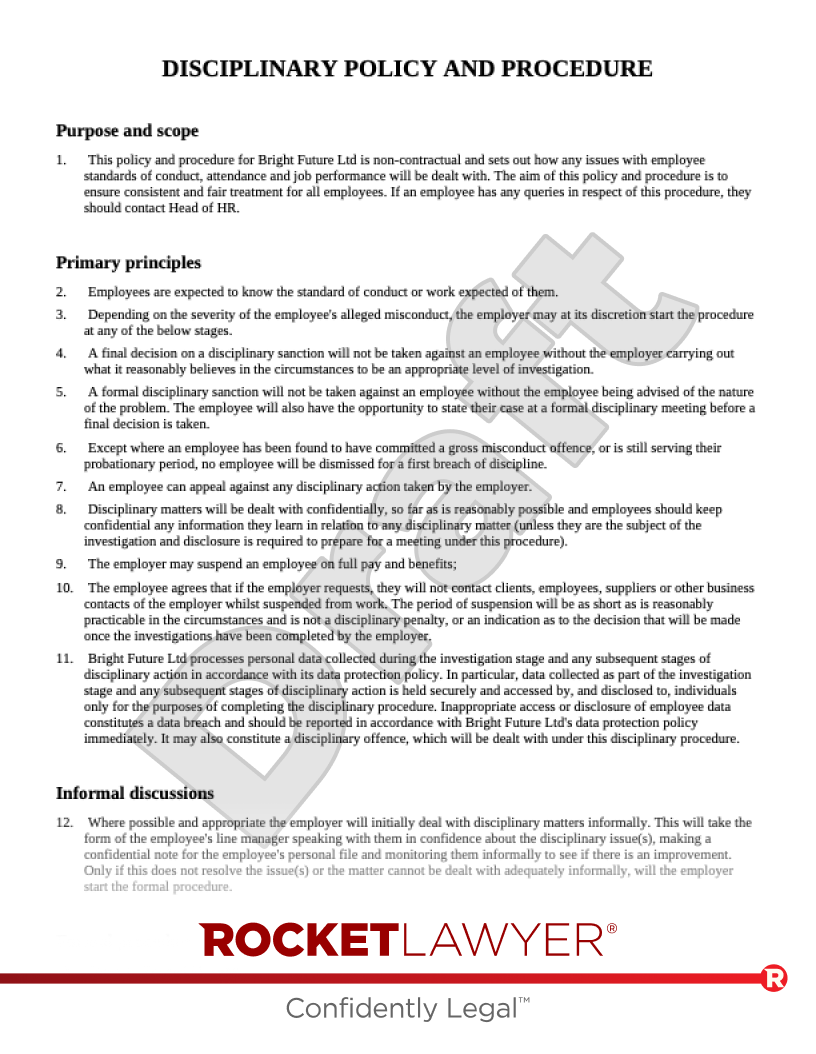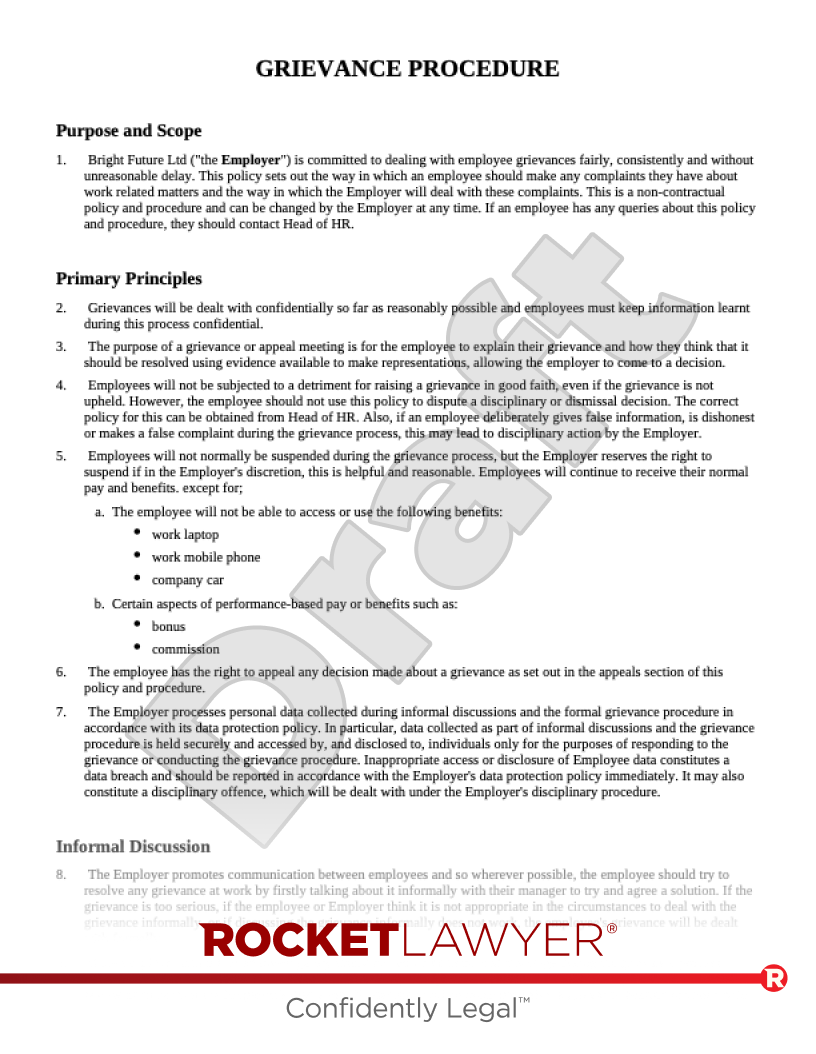Dear ,
Re: Confirmation of dismissal
Following the disciplinary hearing held on the decision has been made to terminate your employment by reason of your misconduct.
The reason for this decision is that the hearing has found that your conduct was unsatisfactory in the following respects: .
Since you currently have an active final written warning dated on your disciplinary record, we consider that dismissal is the appropriate sanction.
The arrangements in respect of your dismissal are:
- Your dismissal is effective immediately and your final day of employment is therefore (the Termination Date). You will be paid in lieu of your notice period of in accordance with your contract of employment, subject to normal deductions of tax and National Insurance contributions.
- We will pay you in lieu of any accrued but untaken holiday, less normal deductions of tax and National Insurance contributions.
- If you are entitled to reimbursement of any genuine expenses incurred prior to the Termination Date, you must submit your claim by .
- You must return in good condition any property which belongs to us, as we direct. This includes confidential information and documents, whether in hard copy or electronic form.
- Your final payment of salary shall be made on , less normal deductions of tax and National Insurance contributions and we will forward your P45 to you in due course;
You have the right to appeal against your dismissal and any of the above arrangements can be varied or revoked in the event of a successful appeal. If you wish to appeal you should inform in writing by , stating your grounds of appeal in full and your appeal will be dealt with in accordance with the company's disciplinary procedure. The dismissal will still take effect as described above if you appeal, but if your appeal is successful then you will be reinstated with retrospective effect to the Termination Date and any lost pay will be reimbursed.
We treat personal data collected during the disciplinary procedure in accordance with our data protection policy. Information about how your data is used and the basis for processing your data is provided in our employee privacy notice.
If you have any questions please contact .
Yours sincerely,




